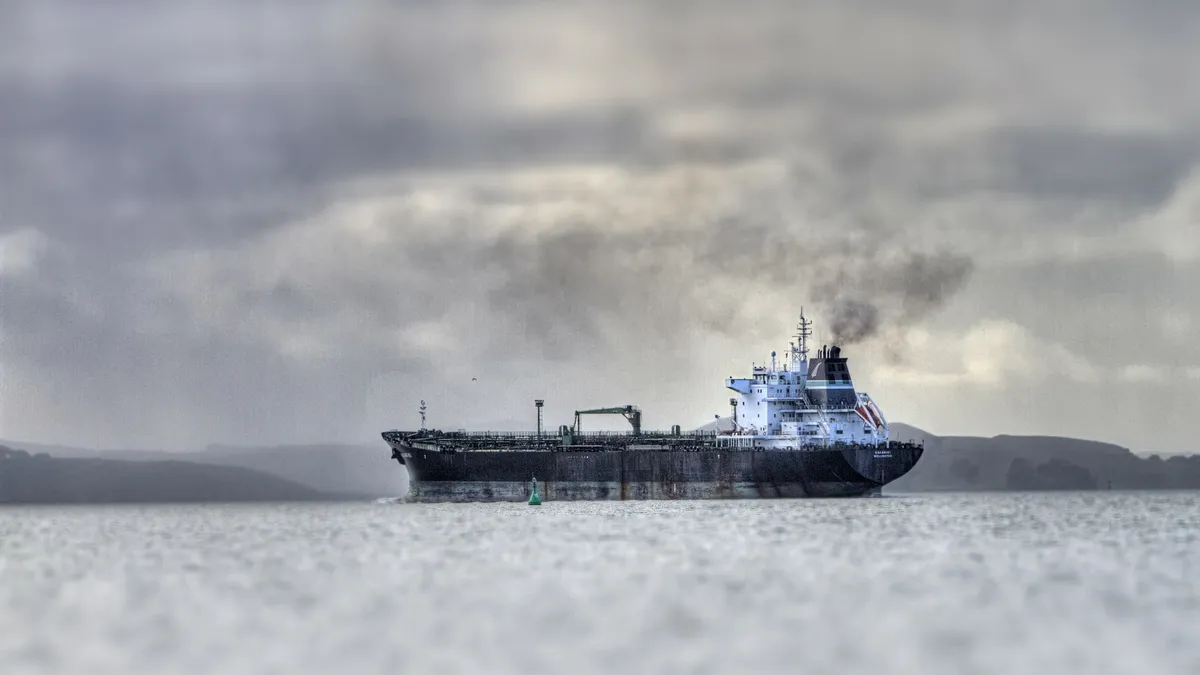Dive Brief:
- The proposed joint venture of the Ocean Network Express (ONE) felt a second blow as the South African Competition Commission rejected the proposed merger, The Loadstar reported Wednesday.
- The rejection is based on concerns of potential collusion between the lines, as the three lines' — Kawasaki Kisen Kaisha (K Line), Nippon Yusen Kabushiki Kaisha (NYK) and Mitsui O.S.K> Lines (MOL) — car-carrying business were once found to be part of a price-fixing cartel in South Africa.
- The rejection throws a wrench in the lines' plans to begin the joint venture July 1, 2017, and not long after the U.S. Federal Maritime Commission (FMC) refused to approve the deal on jurisdiction concerns, JOC.com reports.
Dive Insight:
The proposed merger between K Line, NYK and MOL at first appeared to be the latest deal in a wave of industry consolidation, but recently ONE has become a figurehead for the industry's issues.
The three lines announced the proposed deal in November, noting merging operations would help them better manage a sluggish cargo demand, low oil prices, and the industry's overcapacity. Together, the companies would save $1.5 billion a year and become the sixth largest shipping line in the market, boasting a capacity of 1.4 million TEU and about 7% market share.
While surprising, the news of a merger were not unexpected. The industry has for years been consolidating into ever larger carriers with extensive networks and bigger ships. Smaller carriers who did not join a shipping alliance or grow through acquisition, or both, risked being left behind.
In fact, the discrepancy between top carriers' capacity and their competitors is stunning: Maersk Line and MSC boast over 3 million TEUs each; CMA CGM can claim over 2 million TEU; while the next three largest operate over 1 million TEUs each. Beyond the top 6, only 13 other carriers — including each of the three Japanese lines — can claim over 100,000 TEUs, according to Alphaliner's Top 100 list. In other words, the shipping alliances that dominate ocean cargo transportation are edging toward a sort of oligarchy as economies of scale encourage consolidation at the top.
The proposed joint venture into ONE would follow this trend. However, regulators worldwide have begun to push back against unchecked consolidation in the industry, and ONE appears to be their first target.
The Loadstar report on the reasons behind the South Africa Competition Commission's rejection reveals an air of distrust against shipping lines' ability to avoid collusion. New alliances have passed the test since they are not operational in nature, but a mega-merger is another story. A joint venture starting next month, with operations set to start in April, would significantly alter the lines' bargaining power with ports and terminals.
South Africa's are not the only regulators skeptical of the competitive nature of the shipping industry. In the United States, the climate in which ONE hopes to join together is less than ideal.
The lines' submitted their proposal to the FMC, whose oversight powers are currently being scrutinized by Congress. While considering the deal, the FMC then decided it did not have the jurisdiction to approve a joint venture as it was operational in nature, and passed the buck to the Department of Justice. Meanwhile, the Department of Justice is currently investigating container carriers over allegations of collusion to drive up prices for supply chain partners, and members of the agency have expressed disdain over the industry's consolidation.
However, industry experts argue consolidation is necessary for competition and recent ocean rates show just how competitive transport rates remain.
Regardless, South Africa's rejection of the deal places the Japanese lines' ambitions in hot water. To fully operate, the regulators in each major trade route must approve the deal. For now, signs are not pointing upward for ONE.












